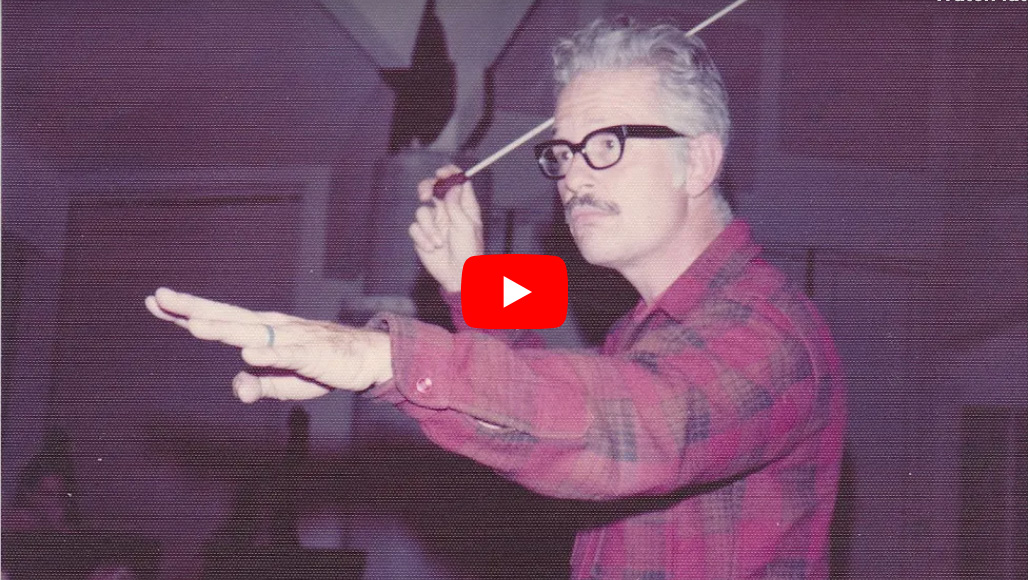Music Director 1964–2014
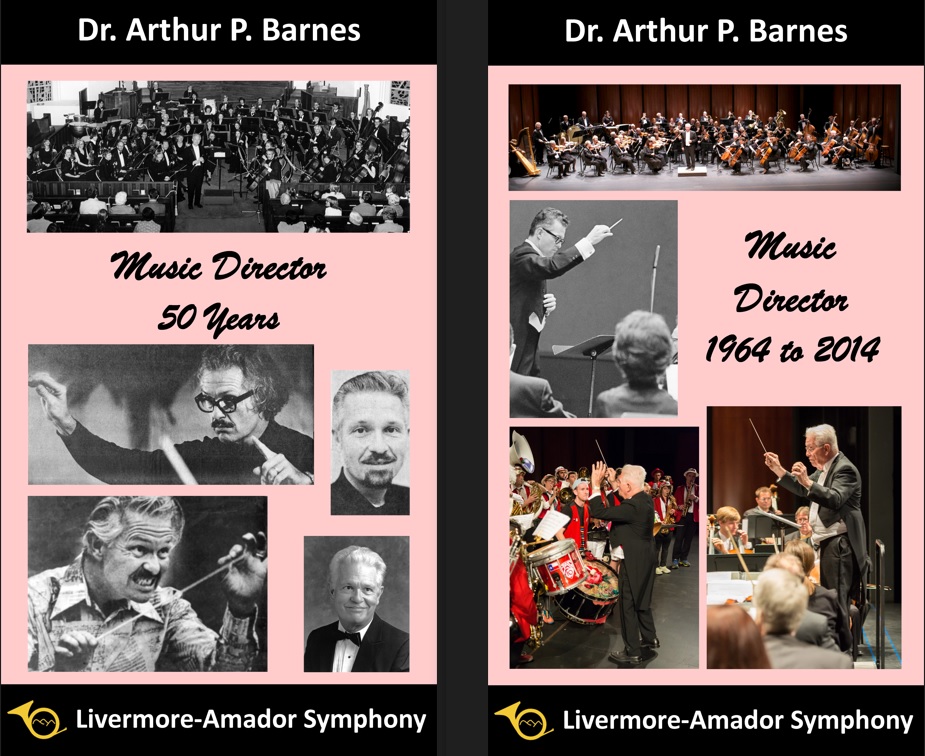
Music Director Emeritus Arthur P. Barnes died on February 6, 2024.
Art was our music director and conductor for 50 years, from 1964 to 2014.
He is missed.
Listen to a tribute to Art by LAS Music Director Lara Webber
at the June 2024 LAS concert (7-min., 1.8MB mp3).
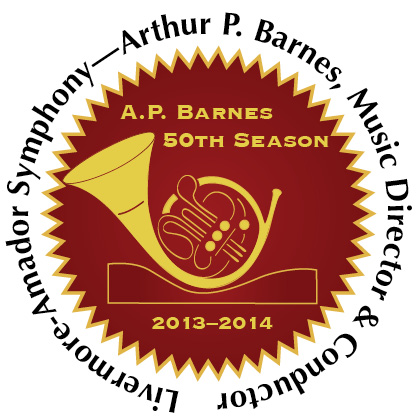
To the members of the orchestra,
the board, and the Guild:
What a great time I have had to have been associated with so many wonderful musicians of the Livermore-Amador Symphony—and for so many years. I must thank all of you who had anything to do with the success of this band: the board; the Guild; and, of course, each and every one of the players, past and present.
A pleasure to have had all my children play at times with the group: Jennifer, Jeffrey, and Holly, and even my granddaughter Margaux—and, of course, Helene. So many of you have become close friends and associates that it often feels like one happy family. And, I warmly appreciate the leadership and responsibility that many have assumed when called upon to do so.
In the next few years, I hope that I will be called upon to offer advice and support in any way that I can. In this way, I would give back to the orchestra after all the years of service that each of you have given to me and the organization. Surely your new conductor will be able to continue what has been a wonderful fifty years of growth and accomplishment.
Art Barnes (May 2014)
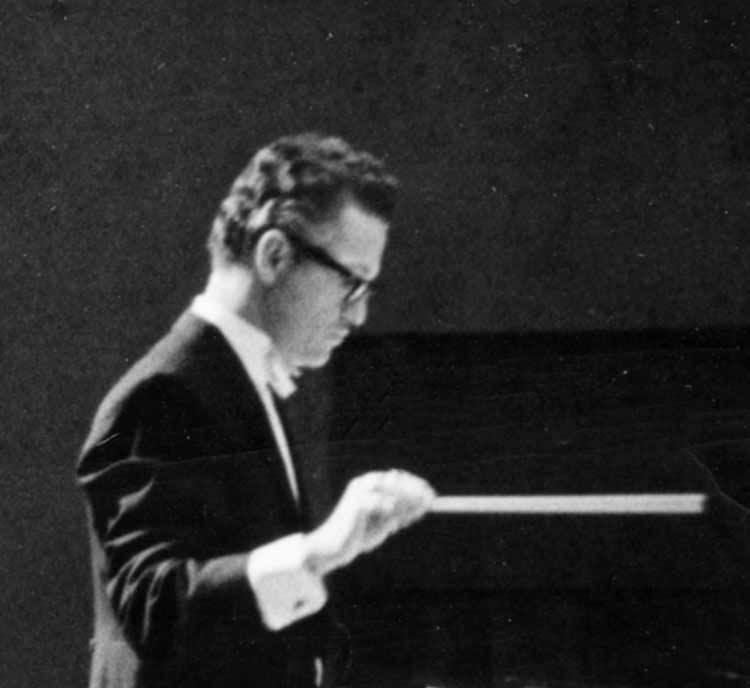
Barnes conducting a concert
at Livermore High School, approx. 1968
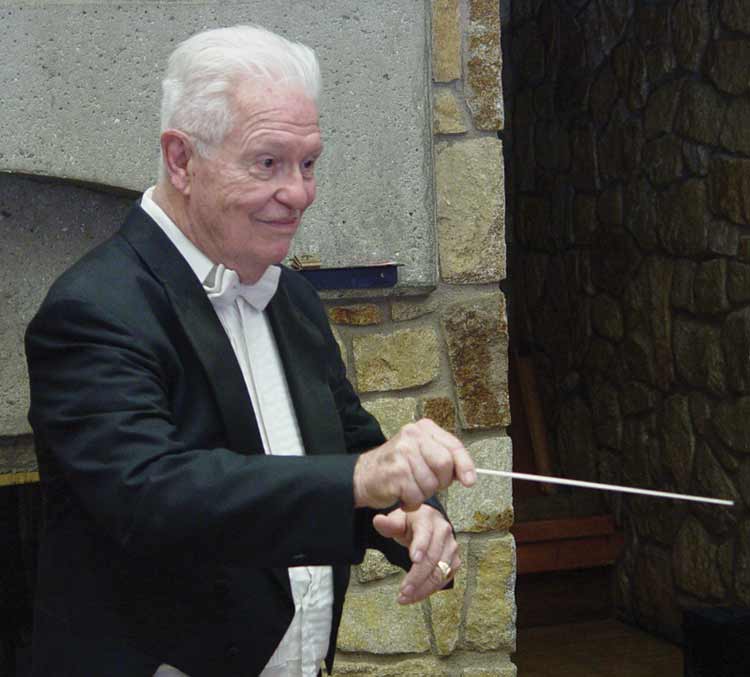
Celebrating the Symphony’s
50th season
at Asilomar in Pacific Grove, 2013
Art Barnes took over the podium of the Livermore-Amador Symphony in the fall of 1964. The 2013–14 season marked his
50th year and his last year of full-time involvement. Under his leadership, the Symphony had developed into a fine community orchestra as the group grew in size and expertise.
Barnes was named the 2014 Tri-Valley Hero in Arts and Culture by the East Bay Division of Embarcadero Media; consequently a feature article by Dolores Fox Ciardelli about Barnes was published in 11/21/14 edition of the Pleasanton Weekly. The awards presentation at the DoubleTree by Hilton Hotel in Pleasanton on October 20, 2014, had a nice touch: Barnes received his engraved trophy from the hand of Bob Williams, Barnes’ friend and longtime assistant conductor.
The LAS concert on May 17, 2014, Barnes’ last as conductor and music director, was very celebratory: The orchestra performed two of his compositions, the mayor of Livermore presented a city proclamation extolling him, and the Stanford band played a loud and energetic tribute to him. The concert began with the band and orchestra playing Barnes’ arrangement of the “Star-Spangled Banner”—see photos featuring Art Barnes with the orchestra and the Stanford Band.
During his college career at Wichita State University, Barnes was a member of the Wichita Symphony’s trombone section. He graduated in 1953 with a bachelor’s degree in music education and a master’s degree in theory and composition. His early career included serving as supervisor of music for two years in a community in western Ohio. During that time he was a member of the trombone section of the Fort Wayne (Indiana) Philharmonic. During these early years he had an active career as a piano accompanist and also was a jazz band trombonist and pianist. He would play in a piano bar until 2 a.m.!
His first university position was at Southern Illinois University, where he conducted the band program, taught theory and ear training, and played bassoon in the Faculty Woodwind Quintet. He moved to Fresno State in 1959 as director of bands and professor of theory and ear training; and he was first bassoon in the Fresno Symphony.
Barnes arrived at Stanford in 1963 on a one-year sabbatical from Fresno to work on a doctorate in orchestral conducting. When the degree was finished, he was offered and accepted a full-time position at Stanford. There he conducted the chamber orchestra and the entire band program and taught theory, ear training, and score reading. During his early years in the area he also served as conductor of the choir at the Palo Alto Unitarian Church and as conductor of the El Camino Youth Symphony. He spent four summers as a conducting fellow with the American Symphony Orchestra League; his primary conducting mentor in this venue was Richard Lert. He also spent a summer workshop studying with conductor Eric Leinsdorf.
In the U.K., Barnes was a guest of the music department of the University of York several times—most recently in the summer of 2012, when he accepted an invitation to be a visiting scholar in the music department. In addition to his orchestral involvement, he worked in York as a brass band composer and conductor. Some of his compositions were published in Britain by June Emerson Wind Music. A work for French horn and piano was performed in May 2012 by the principal horn of Opera North at a convention of brass players in England. Barnes appeared as a guest conductor, clinician, and adjudicator in Australia, Japan, England, the Philippines, and the U.S.
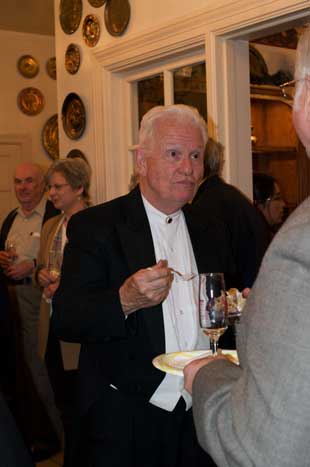
Art Barnes at an
after-concert reception
in March 2010
held to celebrate
his 80th birthday.
(photo: Walter Davies)
Barnes’s eclectic background and skills strongly contributed to the success and longevity of the Symphony. And the skills of his family contributed, too, when they occasionally performed with LAS as members of the orchestra or as soloists: His wife and son on French horn, one daughter on violin and viola, another on bassoon, and a granddaughter on cello.
Symphony lore for years included a myth that Barnes’s doctoral thesis was based on his work with LAS. The Symphony did have a role, of lesser import, in some of the classes he taught at Stanford, though: Recordings of LAS mistakes were occasionally used as examples for ear-training students to listen for “What was wrong with that?”!
True story: Art Barnes once left a Friday-night Pops concert in Livermore with his scores on the roof of his car! He conducted the Saturday Pops concert primarily from merged individual parts. The music was discovered on Sunday morning near Vineyard Avenue south of Livermore, as wet sheets scattered over the countryside.—Orchestra member Larry George, on a bicycle, had retraced Barnes's route home! He gathered up the music and brought it to the home of orchestra members Arnold and Marion Clark since Marion was the Symphony librarian. The three of them spread music throughout the house to dry; music everywhere. And their efforts paid off: the complete set of music was successfully recovered and usable. (Good thing, since some of it had been rented!)

© Livermore-Amador Symphony Association
